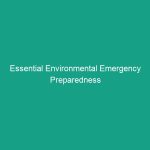Introduction
Good morning team,
Today, we’re going to discuss an incredibly important topic: Essential Traffic Safety Guidelines: Avoid Risks and Stay Safe on the Road. With the increasing number of vehicles on our roads and the various challenges that come with driving, understanding these guidelines is crucial not just for our Safety, but also for the Safety of those around us.
Traffic safety is a vital aspect of our daily operations, especially if your job involves driving as part of your responsibilities. By adhering to these guidelines, we can significantly reduce the risk of accidents and injuries on the job.
Understanding Essential Traffic Safety Guidelines
Essential Traffic Safety Guidelines encompass a set of rules and practices aimed at reducing the risks associated with road travel. This includes everything from obeying traffic signals to understanding the importance of vehicle Maintenance. These guidelines are not just legal requirements; they are fundamental to ensuring the safety and well-being of all employees.
Many people believe that traffic safety is only about following the rules—while this is certainly a part of it, it goes much deeper. It involves understanding the risks, anticipating potential Hazards, and making informed decisions while driving. Ignoring these guidelines can lead to serious consequences, including accidents that could result in injuries or even fatalities.
Key Hazards, Risks, and Safety Considerations
When it comes to traffic safety, several key hazards and risks must be considered:
- Distracted Driving: This includes texting, eating, or using in-car entertainment systems while driving. Distracted driving is a leading cause of crashes.
- Speeding: Driving over the speed limit reduces the driver’s ability to react quickly to sudden hazards.
- Vehicle Condition: Poorly maintained vehicles can lead to accidents. Regular checks on brakes, tires, and lights are essential.
- Weather Conditions: Rain, fog, or icy roads can significantly affect driving conditions and should be taken into account.
- Impaired Driving: Driving under the influence of alcohol or drugs greatly increases the chance of accidents.
Ignoring these risks can lead to severe real-world consequences, including legal penalties, increased insurance costs, and most importantly, injuries or loss of life. It’s crucial that we all stay vigilant and proactive about traffic safety.
Best Practices, Procedures, & Actionable Advice
Now that we understand the importance of traffic safety and the risks involved, let’s look at some Best Practices that can help us stay safe on the road:
1. Always Wear Your Seatbelt
Wearing a seatbelt is one of the simplest and most effective ways to protect yourself in a vehicle. Ensure that all passengers also buckle up before the vehicle starts moving.
2. Avoid Distractions
Keep your focus on the road. If you need to make a phone call or send a text, pull over safely before doing so. Remember, no message or call is worth risking your life or the lives of others.
3. Adhere to Speed Limits
Always obey posted speed limits and adjust your speed according to road conditions. If the weather is poor, reduce your speed even further.
4. Conduct Regular Vehicle Maintenance
Ensure that your vehicle is in good working order. Check your brakes, tires, lights, and fluid levels regularly. Address any maintenance issues immediately.
5. Be Aware of Surroundings
Always be aware of your surroundings. Look out for pedestrians, cyclists, and other vehicles. Use mirrors frequently to check your blind spots.
6. Adjust for Weather Conditions
In adverse weather conditions, such as rain or fog, increase your following distance and drive at a safe speed. Use headlights in low visibility conditions.
7. Don’t Drive Under the Influence
Never drive if you are under the influence of alcohol or drugs. If you’re feeling drowsy, find a safe place to pull over and rest.
Case Studies
To illustrate the importance of these practices, let’s consider a couple of real-life incidents:
- Incident 1: A team member was involved in a crash due to Distracted Driving. They were texting while driving and failed to notice a stop sign. Fortunately, no one was injured, but their vehicle sustained significant damage.
- Incident 2: Another employee experienced brake failure because they neglected regular vehicle maintenance. This resulted in a minor accident. Thankfully, they were able to avoid a more serious collision.
Both of these incidents could have been prevented by following essential traffic safety guidelines.
Regulations, Standards, and Compliance
It’s important to be aware of the Regulations and Standards that govern traffic safety. Organizations such as OSHA and local traffic authorities have set guidelines that aim to protect drivers and pedestrians. Compliance with these regulations is not only a legal obligation but also a moral one that ensures the safety of everyone on the road.
Failure to comply can result in penalties, accidents, and increased insurance rates. Regular safety Training and refreshers can help keep everyone informed about current safety standards.
Employee Engagement & Discussion
Now that we’ve covered a lot of important information, I’d like to hear from you. What safety challenges have you encountered related to traffic? Are there specific situations you find particularly hazardous? Let’s open the floor for discussion and share our experiences so we can learn from one another.
Conclusion & Key Takeaways
In conclusion, it’s crucial that we all prioritize traffic safety by following essential guidelines. Here are the key takeaways:
- Always wear your seatbelt.
- Avoid distractions and stay focused.
- Obey speed limits and adjust for conditions.
- Conduct regular vehicle maintenance.
- Remain aware of your surroundings and anticipate hazards.
By implementing these practices, we can create a safer work Environment for ourselves and our colleagues. Thank you for your attention and commitment to making safety a top priority. Let’s work together to ensure that we all stay safe on the road!


